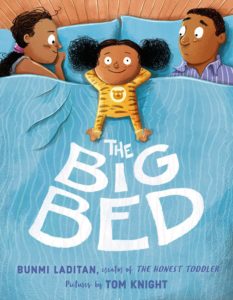
This month’s Industry Insider interview is with Sylvie Frank, Senior Editor at Paula Wiseman Books, a boutique imprint of Simon & Schuster’s Children’s Division. She is the editor of award-winning and critically-acclaimed books including Strictly No Elephants by Lisa Mantchev, illustrated by Taeeun Yoo; I Have a Balloon by Ariel Bernstein, illustrated by Scott Magoon; Miss Mary Reporting: The True Story of Sportswriter Mary Garber by Sue Macy, illustrated by C. F. Payne; and OCDaniel by Wesley King.
Since joining Paula Wiseman Books in 2013, Sylvie has been on the prowl for literary, character-driven middle grade and kid-focused, snappy picture books. She is drawn to original and diverse voices across all genres. One of her favorite pastimes is browsing agents’ and illustrators’ websites for new talent. When she’s not reading, Sylvie can be found running while listening to audiobooks.
Or answering interview questions from OPB via email.
RVC: At an SCBWI event in Orlando maybe 5 years back, you said one of the most common reasons you were rejecting PB manuscripts was that they were “too quiet.” What kind of trends–good, bad, or otherwise–are you seeing in PB submissions these days?
SF: I still see a lot of submissions I would call too quiet. It’s been interesting and encouraging to see that our divided political times have led to writers and illustrators channeling their energy and frustration into their work: I’m seeing a lot of picture books that celebrate acceptance, diversity, and individuality, as well as books that are calls to action. There’s absolutely a need for these books, but I’m anticipating a tidal wave of them starting this fall. Where some of these manuscripts go wrong is that they can read more like mantras than picture books, which can make it difficult to develop a visual concept.
RVC: Let’s talk about “visual concepts” for a moment. How much should PB writers (not author/illustrators) be thinking about that with their own manuscripts? Are there ways that these writers can communicate a useful/helpful/appropriate sense of their vision without stomping over the illustrator’s turf or rubbing editors the wrong way?
SF: This is so tough for writers. They should have a completely solid vision for their book. After all, a picture book relies equally on text and art to tell a story (if it’s not wordless, that is). As the writer, you should have a thorough understanding of how the book could page out and what scene might unfold on every spread. If a writer is thinking only about the words, then likely the story will not have enough of a visual component to make it a successful picture book. It’s for that reason that I encourage all writers to make picture book dummies as a step in their writing and revision process. But here’s the catch: writers must then let their visions go. It’s a lot to ask—I know! But the art of creating a picture book means that the illustrator’s vision is just as important as the writer’s. So, it’s the writer’s job to write the story in succinct, specific, action-filled words that leave space for the illustrator to show the story. That means leaving out descriptions and leaving action open to the artist’s interpretation. Things to leave out: the weather, what a character is wearing or how he/she/it looks, describing how someone gets somewhere, etc., etc.
Resist!
Of course, this leads us to the topic of art notes. I’ve heard of many editors who believe that if a picture book manuscript requires art notes, then it’s not good enough. I’m not quite so strict. My personal opinion is that if the action is visual and does not require narrating, a very, VERY brief art note can be used so that the editor or agent understands how the action is progressing. As the writer, if you envision a scene in which your protagonist has baked a cake and gotten flour, frosting, and sprinkles absolutely everywhere and it’s the climax of the story, the manuscript could read:
I was going to be in big trouble.
Then an art note could say: [Art note: Baking project has gone awry.]
You do not need to tell the illustrator (or editor or agent) that there is flour on the protagonist’s nose and sprinkles on the floor. These details are up to the illustrator to decide, and potential editors and agents have excellent imaginations: they can create this scene in their heads. That’s why they’re good at their jobs.
RVC: Speaking of people being good at their jobs—it seems that more and more often, a PB’s final title is decided well after a contract is signed, thanks to input from editors and other publishing pros. Is that the case at Paula Wiseman Books or is that just anecdotally true? And how important is it to have a WOW title during the submission process if it’s more than likely going to be changed at some point?
SF: I would never let a less-than-stellar title deter me from acquiring a manuscript I loved—although I would likely try to come up with a better title before taking the manuscript to acquisitions. It’s frequently true that manuscripts get renamed somewhere along the publishing path, but certainly not always. Some manuscripts come my way with a perfect title and we never even consider changing it. Some titles require weeks and weeks of brainstorming and agony before we find the right one. Every book is different, and I’m cool with that.
RVC: When I think about a Paula Wiseman Books PB, the word that comes to mind is “heart.” Please explain what “heart” is for you when it comes to PBs, and how important is it in the acquisition conversation?
SF: I like to hear that! Thanks! I call “heart” a lot of different things: theme, emotional core, re-readability factor. I worry that “heart” makes it sound like we only publish books that could be called sweet, and that isn’t the case. In essence, heart is what makes a reader come back from more. I always think about someone browsing in a bookstore. Picture books can be read in their entirety during a browsing session. If a book can be read, digested, and forgotten while the buyer is shopping, why would he or she buy it? But if a book encourages the purchaser to slow down, consider what it means, and—best of all—want to return to read it again, that increases the likelihood that he or she will buy it. So that’s what I mean by re-readability factor: there has to be enough that is substantial and thought provoking to convince a busy parent/aunt/uncle/grandparent/whoever to drop $16.99 on this book (and make space for it on their bookshelf!) in order to share it with a kid.
People fre quently share book ideas with me. “What about a book about a kitten that pretends it’s a cow?” My response to all ideas is, “Sure, write it. But what’s it about?” What I mean by that is there needs to be an emotional aspect to the story. A good example is a book I edited called Strictly No Elephants by Lisa Mantchev and Taeeun Yoo. On the surface, it’s about a boy and his pet elephant who are excluded from pet club. But the emotional core of the story is about making change, creating inclusive spaces, and celebrating difference. I want to give another example of a book that I find completely hilarious (and yes, it’s also one I edited so perhaps I am biased), called I Have a Balloon by Ariel Bernstein and Scott Magoon. The plot is that an owl has a balloon and a monkey wants it.
quently share book ideas with me. “What about a book about a kitten that pretends it’s a cow?” My response to all ideas is, “Sure, write it. But what’s it about?” What I mean by that is there needs to be an emotional aspect to the story. A good example is a book I edited called Strictly No Elephants by Lisa Mantchev and Taeeun Yoo. On the surface, it’s about a boy and his pet elephant who are excluded from pet club. But the emotional core of the story is about making change, creating inclusive spaces, and celebrating difference. I want to give another example of a book that I find completely hilarious (and yes, it’s also one I edited so perhaps I am biased), called I Have a Balloon by Ariel Bernstein and Scott Magoon. The plot is that an owl has a balloon and a monkey wants it.  But it’s really a book about wanting what you can’t have, negotiating, and assigning value to objects; it’s basically an economics lesson. So: heart is that extra layer of nuance and meaning. It’s what starts conversations between the person reading aloud and the child.
But it’s really a book about wanting what you can’t have, negotiating, and assigning value to objects; it’s basically an economics lesson. So: heart is that extra layer of nuance and meaning. It’s what starts conversations between the person reading aloud and the child.
RVC: What’s it like working for a NY publisher but living in Colorado?
SF: Fab! I feel really lucky. Technology makes it easy. Between FaceTime, email, and UPS, I’ve got it covered. I visit the office four or five times a year for sales meetings and try to make the most of the real face time with my colleagues. I miss the bustle of being in the office every day, but overall my collaborations feel just as productive and creative as they always have. I should also add that there are benefits to having someone on the team who has a non-NYC perspective and can cultivate relationships elsewhere. For example, it’s been really valuable (and fun!) to become involved with the Rocky Mountain SCBWI chapter and to network with the fantastic local independent bookstores (shout-out to Boulder Book Store and Tattered Cover in particular!).
RVC: Favorite munchies to enjoy with a terrific book?
SF: I’m a sucker for chips and salsa. Mmmmmmmmm.
RVC: Instead of asking you flat-out what you’re looking for, please share three of your titles that are a good representation of what you value in a PB submission.
SF: I’m so glad you asked!
I Have a Balloon by Ariel Bernstein and Scott  Magoon
Magoon
Small Walt by Elizabeth Verdick and Marc Rosenthal
Strictly No Elephants by Lisa Mantchev and Taeeun Yoo
RVC: Thank you, Sylvie!



 This month’s
This month’s 



